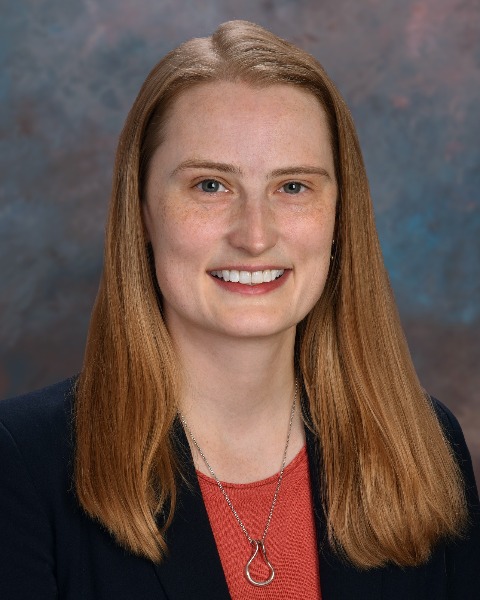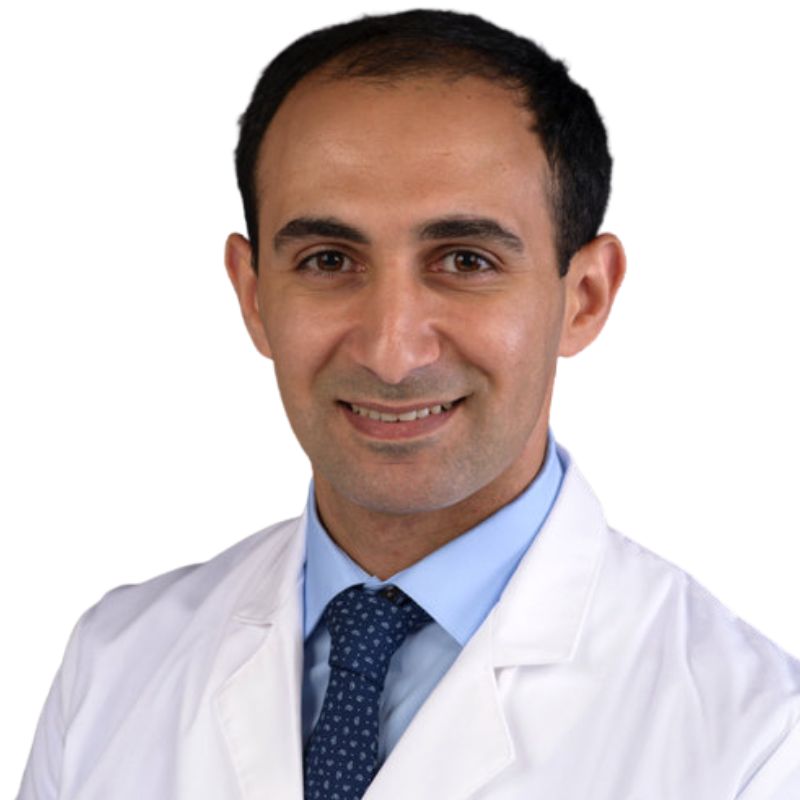The Aneurysm and AVM Foundation is pleased to announce the recipients of the 2021 Cerebrovascular Research Grant Awards. We selected four researchers whose scientific projects showed the greatest potential to improve our understanding of cerebrovascular diseases.
 Research Study: Targeting KRAS signaling in brain arteriovenous malformations
Research Study: Targeting KRAS signaling in brain arteriovenous malformations
Primary Investigator: Eunhee Kim, Assistant Professor, The University of Texas Health Science Center at Houston
Background: Although brain arteriovenous malformations (bAVMs) are rare, only affecting ~1% of population, when present rupture causing intracerebral hemorrhage (ICH), bAVMs are a major cause of morbidity and mortality in children and young adults. Treatment strategies for bAVMs are severely limited relying on risky surgical resection, embolization or radiotherapy, and currently no pharmacologic treatment is available due to the lack of understanding on the pathophysiology of bAVMs at molecular level.
Recent clinical studies revealed approximately 60% of the sporadic bAVM patients carry KRAS mutations in their brain endothelial cells, and the KRAS mutations were more frequent in high flow AVMs. After testing the casual role of KRAS mutation in bAVM formation in mice, it was revealed that the mice with the KRASG12V mutation developed bAVMs mirroring distinctive human bAVM characteristics. This confirmed that MEK/ERK signaling (among KRAS downstream) was significantly activated by the KRASG12V mutation, suggesting that MEK/ERK plays a critical role in the KRASG12V-induced bAVMs.
Dr. Kim’s current hypothesis is that KRAS mutation induces bAVMs via MEK/ERK signaling, and the inhibition of MEK/ERK attenuate mutant KRAS-induced bAVMs. To address the hypothesis, mice with bAVMs will be treated with Trametinib, an FDA approved MEK/ERK inhibitor, and the bAVMs will be non-invasively monitored by magnetic resonance imaging (MRI) analysis. These studies will be used to evaluate for certain if MEK/ERK inhibition by trametinib treats KRASG12V-induced bAVMs.
Research Objective: The goal of Dr. Kim’s proposal is to establish whether targeting MEK/ERK is an effective and safe approach to treat human bAVMs, with the long-term goal of developing non-invasive therapy to treat bAVMs.
Outcomes: Through this grant from the Aneurysm and AVM Foundation, Dr. Kim and his team hope for their results to be the basis for repurposing of available drugs targeting MEK/ERK signaling for bAVM patients. The study may also identify novel effector(s) regulated by KRAS mutation which could be a potential therapeutic target for bAVM treatment.
Source: Eunhee Kim, Assistant Professor, The University of Texas Health Science Center at Houston. This research summary has been adapted and edited from Dr. Kim's research proposal.
.jpg) Research Study: Developing and Evaluating an Automated Patient Monitoring System for Preventing Fragmentation of Subarachnoid Hemorrhage Care: A Learning Health System Approach
Research Study: Developing and Evaluating an Automated Patient Monitoring System for Preventing Fragmentation of Subarachnoid Hemorrhage Care: A Learning Health System Approach
Primary Investigator: Dr. Neha S Dangayach, Assistant Professor of Neurosurgery and Neurology, Icahn School of Medicine at Mount Sinai
Background: Aneurysmal subarachnoid hemorrhage (SAH) is a public health problem affecting 30,000 American adults every year with high mortality and substantial morbidity amongst survivors. Patients often need to undergo inter-facility transfers (IFT) to ensure timely access to resource-intensive, life-saving treatments, which are available only at designated sites.The phases of care for stroke patients may include the following phases: pre-hospital, emergency room (ER), IFT, in hospital, post-acute, and long-term recovery. "Fragmentation" in healthcare delivery means the systemic misalignment of incentives or lack of coordination that adversely impacts care quality, medication errors, resource utilization, cost, and outcomes, and there is no empirically informed guidance on how to integrate these phases as of now.
A learning health system approach allows health systems to leverage the electronic health record (EHR) to implement process improvements and to provide better care for future patients. Such an approach has reduced fragmentation of care in patients with heart failure but has not been studied for stroke patients. The promise of seamless integration of data for patient care via the EHR has not been realized due to several barriers, but the persistence of these barriers despite the availability of tools to overcome them is unacceptable for time sensitive disease processes such as stroke where “Time is Brain”.
Dr. Dangayach’s team will evaluate the usability and adoption of a learning health system and dashboard by different stakeholders. Although the EHR and analytic tools exist, they surprisingly have never been integrated to facilitate informed clinical decisions and implement a learning health system for one of the most fatal health conditions.
Research Objective: The goal of Dr. Dangayach’s proposal is to leverage a learning health system approach to prevent fragmentation of care for SAH patients by first creating an EHR agnostic platform and then by building an EHR based dashboard to better inform patients, families and care providers about key milestones and areas of care that can be improved upon in real-time.
Outcomes: Using this grant from the Aneurysm and AVM Foundation, Dr. Dangayach’s team hopes that their research will be the first step in seamless integration of care for SAH patients that will provide new insights, incorporate smart analytics, machine learning to provide better care, clinical decision support and improve short-term and long-term outcomes for SAH patients and improve ways of communication with patients and families via dedicated dashboards.
Source: Dr. Neha S Dangayach, Assistant Professor of Neurosurgery and Neurology, Icahn School of Medicine at Mount Sinai. This research summary has been adapted and edited from Dr. Dangayach’s research proposal.
 Research Study: Implementing Auricular Trancutaneous Vagal Nerve Stimulation Following Subarachnoid Hemorrhage To Modulate Neuroinflammation And Improve Outcome
Research Study: Implementing Auricular Trancutaneous Vagal Nerve Stimulation Following Subarachnoid Hemorrhage To Modulate Neuroinflammation And Improve Outcome
Primary Investigator: Dr. Anna Huguenard, Washington University in St. Louis, Department of Neurosurgery
Background: Intracranial aneurysms are common, with 3 to 5% of adults having at least one. Presence of an intracranial aneurysm is associated with a risk for rupture, which leads to a type of bleed called a subarachnoid hemorrhage (SAH). In those people who develop a SAH, there is a high risk of death or permanent disability as a result. In addition to the immediate effects from SAH, there are other associated complications which include buildup of fluid in the brain (hydrocephalus), early brain injury and swelling, and reduced blood flow through the vessels in the head (cerebral vasospasm), that all contribute to poor outcomes in these patients.
Aneurysm formation and rupture is complex, and highly influenced by genetic and environmental factors. Inflammation throughout the body and locally may lead to aneurysm formation and rupture, as well as worse outcomes following SAH. Several studies have shown there are increases in inflammatory markers within the blood, cerebrospinal fluid, and the brain tissue itself, with evidence that inflammatory markers are correlated with patient outcomes. Other clinical trials have attempted to use medications that target inflammation to treat these patients, but these medications often had side effects or failed to lead to improved outcomes, and therefore have not been used more broadly.
Vagal nerve stimulation (VNS) has known anti-inflammatory effects, and has been successfully demonstrated in other models of inflammatory conditions like rheumatoid arthritis, sepsis, and inflammatory bowel diseases. Harnessing its anti-inflammatory effects, VNS has also been used in a mouse model of cerebral aneurysms and SAH. In this study, VNS reduced the rupture rate of intracranial aneurysms, the severity of hemorrhage if rupture occurred, and improved survival and outcome after SAH. Given the promising results in animal studies of SAH, Dr. Huguenard proposes to study VNS in her hospital’s SAH population.
Research Objective: The goal of Dr. Huguenard’s proposal is to study VNS in their hospital’s SAH population, as well as studying patients’ outcomes and complications during their hospital stay, and during their recovery after discharge. Samples of blood and cerebrospinal fluid will be collected throughout a patient’s hospital stay to evaluate changes in inflammatory markers.
Outcomes: With this grant from the Aneurysm and AVM Foundation, Dr. Huguenard’s team hopes that this new approach could provide a safe, affordable, and effective way to reduce the inflammatory response to SAH, and improve patient survival and recovery. Despite the high risk for death or injury from SAH, there are few consistent treatments to improve outcomes in these patients, so this research could be a huge benefit to recovering patients.
Source: Dr. Anna Huguenard, Washington University in St. Louis, Department of Neurosurgery. This research summary has been adapted and edited from Dr. Huguenard’s research proposal.
 Research Study: Assessment of RNA Expression of Adhesion Molecules, Mechanoreceptors, and Inflammatory Proteins in Endothelial Cells Harvested From Unruptured Intracranial Aneurysms in Adults.
Research Study: Assessment of RNA Expression of Adhesion Molecules, Mechanoreceptors, and Inflammatory Proteins in Endothelial Cells Harvested From Unruptured Intracranial Aneurysms in Adults.
Primary Investigator: Zaid Aljuboori, MD, Department of Neurosurgery, University of Washington
Background: Intracranial aneurysms are acquired lesions with a genetic predisposition in certain patient groups. They may present with subarachnoid hemorrhage which is the most feared complication as it commonly results in multiple clinical sequala such as stroke, cognitive dysfunction, and others and leaves 50% of patients permanently disabled. Intracranial aneurysms have a prevalence rate of about ~2% and are commonly detected on brain imaging performed for unrelated reasons. The exact pathophysiology for aneurysm development, growth, and rupture remains elusive. Existing evidence suggests that aneurysm formation and growth result from a complex interaction among several factors including patients’ genetic profile, vascular anatomy, hemodynamic characteristics, and environmental factors.
Endothelial cell surface mechanosensitive molecules (MSM) (e.g., integrins, caveolar signalosomes, and mechanosensitive ion channels) are responsible for mechanotransduction and cell adhesion. Several animal studies have alluded to the role of mechanosensitive molecules in the development of vascular malformations such as intracranial or aortic aneurysms. To date, there are no studies that have systematically evaluated the RNA expression profiles of a wide array of mechanosensitive molecules in patients with unruptured intracranial aneurysms. Assessment of the changes of these molecules in unruptured intracranial aneurysms through studying their RNA expression is crucial to understanding their role in the development and evolution of intracranial aneurysms and may lead to the inception of new diagnostic and or therapeutic modalities.
PAI-1 is a protein that plays an important role in fibrinolysis and extracellular proteolysis. It inhibits plasminogen activation by tissue-type plasminogen activator (tPA). TGF, which controls PAI-1 expression, is upregulated in endothelial cells of unruptured cerebral aneurysms. To date, there are no biological markers that can be easily applied in clinical settings to quantify the degree of inflammation within an aneurysm wall. Since PAI-1 is upregulated in inflammation, it’s conceivable that endothelial cells of unruptured intracranial aneurysms will show an increased expression of PAI-1. Moreover, PAI-1 levels can be measured in plasma and can potentially be used as a biomarker to quantify the degree of inflammation within the aneurysm wall and to assess the effects of therapeutic interventions aimed at alleviating aneurysm wall inflammation.
Research Objective: The goal of Dr. Aljuboori’s proposal is to compare the differences of RNA expression profiles of PAI-1 and adhesion molecules/mechanoreceptors (Primary cilium, Polycystin 1, E- & P- selectins, TRPM7, and TRPV4) between endothelial cells harvested from unruptured intracranial saccular aneurysms and peripheral arteries (e.g., radial or femoral).
Outcomes: This grant from the Aneurysm and AVM Foundation will allow for the completion of this pilot study and the obtained data will be used to support a larger grant application to study the molecular pathways that govern the expression of the target molecules in aneurysmal vascular endothelial cells to explain their role in aneurysm development and evolution.
Source: Zaid Aljuboori, MD, Department of Neurosurgery, University of Washington. This research summary has been adapted and edited from Dr. Aljuboori’s research proposal.
